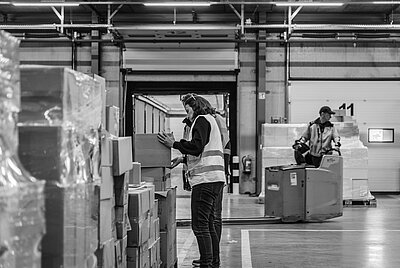Tariffs Are Nothing New — But the Rules Have Changed
Trade tariffs have always existed in the background of global commerce. But in recent years, they’ve become less predictable, more political, and faster moving. What used to take months of negotiation is now deployed by press conference.
The difference in 2025?
This round of tariffs is targeting Europe directly.
And while a 20% increase may not sound dramatic on paper, in high-volume, low-margin categories, it creates immediate pressure on pricing models, supplier contracts, and production timelines.
It also creates second- and third-order effects — especially for businesses operating within complex, multinational supply chains.
The longer you wait to respond, the fewer options you’ll have on the table.
Why Procurement Teams Can’t Assume This Is a “U.S. Problem”
This isn’t just about exporters shipping goods into the U.S.
The ripple effects reach much further:
- If your Tier 1 suppliers export to the U.S., they may be reprioritising capacity or increasing prices to offset risk.
- If you source goods globally, you’ll face increased competition as U.S. buyers flood non-tariffed regions looking for alternative suppliers.
- If your supply chain depends on tight delivery windows, even minor shifts in routes or lead times can create major operational drag.
We’ve seen this before with Brexit:
The businesses that assumed they were “indirectly affected” were often the most blindsided when suppliers changed terms, timelines, or availability without warning.
Tariffs don’t just change costs — they change behaviour.
What the Smartest Procurement Teams Are Doing Right Now
Some businesses will wait for certainty. Others are already moving.
Here’s what we’re seeing from leaders in procurement and operations across Europe:
🔍 1. Running deep supplier and SKU exposure reviews
Not just asking “What are we buying?” but “Where does it really come from?”
This means tracing components beyond Tier 1 — identifying points of risk in geography, contract terms, and production dependencies.
📑 2. Reviewing contract flexibility
Are your supplier agreements built to absorb volatility?
Do you have clauses that allow for volume shifts, alternative SKUs, or route adjustments?
If your contracts only work in stable markets, they’re a liability now.
🛠️ 3. Opening new sourcing conversations — early
You don’t need to switch tomorrow. But exploring alternative suppliers or regions today gives you leverage if and when you do.
Waiting until July will leave you fighting over the same capacity as every other business doing the same thing in panic mode.
🚨 4. Creating operational buffers
This isn’t just about stockpiling — though for some, that may be smart.
It’s about building breathing room into your planning:
– Faster reorder cycles
– Pre-cleared supplier approvals
– Flexible fulfilment arrangements
Think of it as pressure release built into your backend.
🔁 5. Questioning the old logic
Many procurement setups were optimised for lowest landed cost, just-in-time delivery, and razor-thin margin plays.
But if that model only works when tariffs are zero and freight is predictable, it may not be a model worth protecting.
Now is the moment to ask: “Is our current setup still built for the world we’re operating in?”
What’s at Stake? More Than Just Margin.
Let’s get real. A 20% cost increase doesn’t just hurt on paper — it forces decisions.
Do you pass the increase on to customers and risk losing volume?
Absorb it and damage profitability?
Or tear up your sourcing model and rebuild under pressure?
There’s a fourth option: prepare before you’re forced to.
That’s what this 90-day freeze gives you.
And by now, only 61 days remain.
Final Word
You’ve got 61 days to assess your exposure, stress-test your supplier relationships, and rethink the parts of your procurement strategy that weren’t built for turbulence.
That’s time you still control.
Until you don’t.
If you want a partner who can help you make the most of it — let’s talk.


